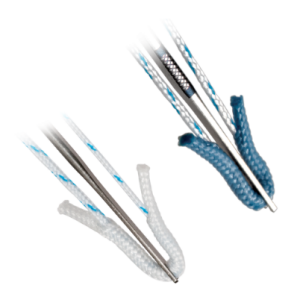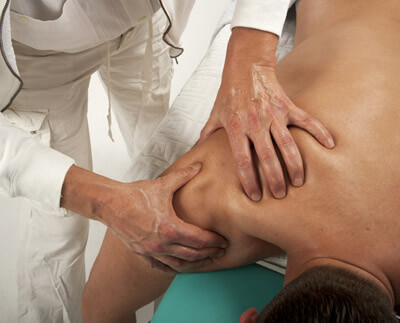-
Mon - Sat
08:00am - 08:00pm

 Shoulder is one of the most complex joints in the human body it is formed by the humerus – upper arm bone fitting to the scapula(shoulder blade) as a ball and socket joint. It has extensive and free range of movement as the cup is shallow and the ball is big but that makes it inherently less stable as compared to hip joint where the ball totally fits into the deep cup with good bony locking of bones. Hip has much less movement while shoulder joint has almost 360 motion which a person needs in his daily life. In shoulder dislocation injury anterior instability occurs when the humerus and scapila are pulled apart after a fall in sports injury or other trauma like fall on outstretched hand. This leads to tear in soft tissue cover that holds shoulder bones together. A surgical procedure is needed to repair the torn ligament capsule to the reduce the risk of recurrent dislocation, injury to joint surfaces and Arthritis along with repeated dislocations.
Shoulder is one of the most complex joints in the human body it is formed by the humerus – upper arm bone fitting to the scapula(shoulder blade) as a ball and socket joint. It has extensive and free range of movement as the cup is shallow and the ball is big but that makes it inherently less stable as compared to hip joint where the ball totally fits into the deep cup with good bony locking of bones. Hip has much less movement while shoulder joint has almost 360 motion which a person needs in his daily life. In shoulder dislocation injury anterior instability occurs when the humerus and scapila are pulled apart after a fall in sports injury or other trauma like fall on outstretched hand. This leads to tear in soft tissue cover that holds shoulder bones together. A surgical procedure is needed to repair the torn ligament capsule to the reduce the risk of recurrent dislocation, injury to joint surfaces and Arthritis along with repeated dislocations.
Dr Prateek Gupta who is renowned shoulder surgeon with about 20 years of experience in Shoulder surgery, is highly experienced in performing arthoscopic (key hole) stabilization for shoulder instability.
 A first time traumatic shoulder dislocation is generally treated by initial rest followed by Physiotherapy for 4-6 weeks but if a second or third dislocation happens it signifies a chronic instability where surgery becomes the mainstay of treatment to fix the torn tissue-ligament complex of shoulder.
A first time traumatic shoulder dislocation is generally treated by initial rest followed by Physiotherapy for 4-6 weeks but if a second or third dislocation happens it signifies a chronic instability where surgery becomes the mainstay of treatment to fix the torn tissue-ligament complex of shoulder.
Today shoulder surgery can be performed on a mere daycare basis, all through complete recovery may require up to 6 months and long rehabilitation programme.
If you have any concern regarding the well being of your shoulder speak with our team.
 A small camera – arthroscope and fine surgical instruments will be put into the shoulder joint through two or three puncture holes, the joint inspected to asses the extent of tear.
A small camera – arthroscope and fine surgical instruments will be put into the shoulder joint through two or three puncture holes, the joint inspected to asses the extent of tear.
After preparing the surface of bone and cleaning up of the torn tissue, the torn ligament capsule structure will be the reattached to the bone using fine screws called suture anchors.
There are may types of suture anchors- metallic titanium, plastic, bioabsorbable and PEEK. They hold the torn tissue to the bone while it heals back.
These sutures will repair the defect and restore the joint anatomy to its normal position thus making it stable again. Some patients have a bone loss which has to be assessed before the operative procedure through CT scan and if significant bony injur or loss is found a open surgery may be recommended over arthroscopy to stabilise the shoulder, where in a small piece of bone is placed where bone has been lost which makes it stable.
 The torn labro-capsular complex (torn protective cover of shoulder bone) is first freed from the surrounding tissues. The native bone is cleared of all old scar tissue and prepared to become ready for reattachment of the capsule.
The torn labro-capsular complex (torn protective cover of shoulder bone) is first freed from the surrounding tissues. The native bone is cleared of all old scar tissue and prepared to become ready for reattachment of the capsule.
The labro-capsular structure is attached to this bone by very fine 2.3-2.9 mm small screws called Anchors.
3-4 anchors are seated next to each other depending on the size of the tear. The thread that is coming out of this anchor is passed through the the torn tissue. When the two ends of the thread are tied to form a knot and are tightened the torn tissue is pulled and is approximated to the bone.
This proximity of tissue to prepared bone leads to healing and thus closing the hole though which the ball of the shoulder joint escapes.
The Anchors are broadly of two kinds
Metallic – generally made of Titanium
Non-metallic these are of different kinds
There are various ways of tying the knots but basic aim is to secure the capsule to the bone and to remove any redundant tissue.

Arm remains immobilised in sling for 4 to 6 weeks, maintain cleanlyness of your operative dressing to avoid infection, keep the surgical site clean and dry.
Surgical dressing will be reviewed on 3rd post operation day and stitches removed on 14th day.
It is normal to have some amount of soarness, in case of sever pain, or discolouration of dressing and high temperature please inform on helpline numbers.
Shoulder bracing, some Wrist and elbow exercise will be demonstrated before the discharge which have to continue daily 4 to 6 times.
An ice pack or a cryo cuff care will be applied to reduce the pain and swelling.
 Post surgery you will be immobilized in a sling for up to 6 weeks during which wrist and elbow range of the moment exercise can be started early and than gentle shoulder movements can be started as demonstrated by physiotherapist.
Post surgery you will be immobilized in a sling for up to 6 weeks during which wrist and elbow range of the moment exercise can be started early and than gentle shoulder movements can be started as demonstrated by physiotherapist.
After 6 weeks active assisted range of movement exercise will be started followed by strengthening exercise for shoulder muscles. The total recovery can take up to 5 to 6 months at which stage one can return to Sports.